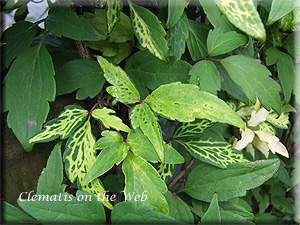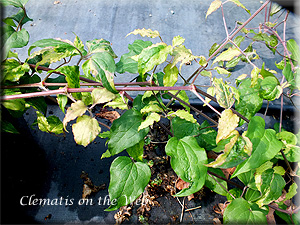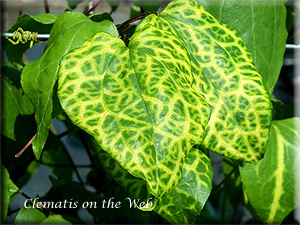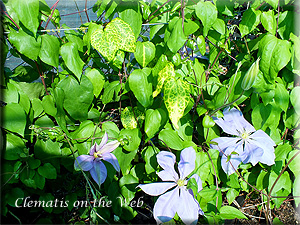Stunting, Mottling and Yellowing
Types affected
Very little attention has been devoted to virus diseases of clematis. Their occurrence is fairly widespread and although all clematis types can be affected, they do not usually cause serious damage.
Symptoms
Viruses may cause yellowing or a mottling or mosaic effect on the foliage that renders the plants unattractive. Affected plants often lack vigour. Symptoms should not be confused with those caused by mineral deficiency such as iron or by unusual weather conditions. Cuttings taken from such plants will also be infected by the virus.

Symptoms of mottling and leaf vein chlorosis

Symptoms of chlorosis or yellowing of the foliage

Symptoms of mottling and leaf vein chlorosis

Symptoms of chlorosis or yellowing of the foliage
Conditions for disease development
Viruses are usually transmitted by insect vectors such as aphids, thrips and whitefly which feed on infected plants and then pass them on to healthy ones. Transmission can also occur by contaminated pruning tools.
Control
Virus diseases are not usually such a problem as to warrant attempting to control the insect vectors. Sometimes affected plants recover from symptoms from one season to the next. If growth is stunted or the plant is no longer attractive then plants should be dug out and destroyed.
Text ©2007 Paul Margot